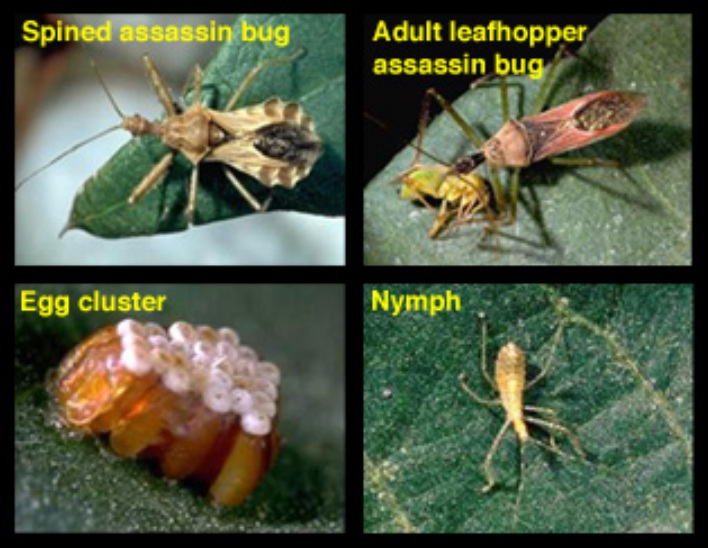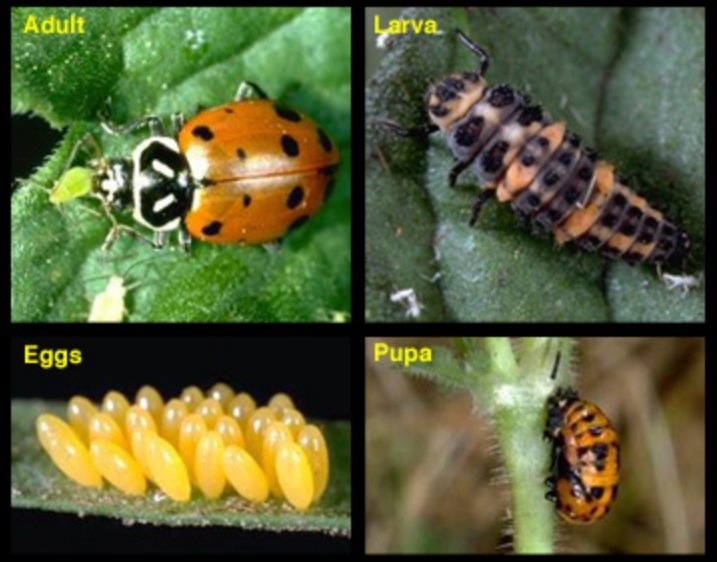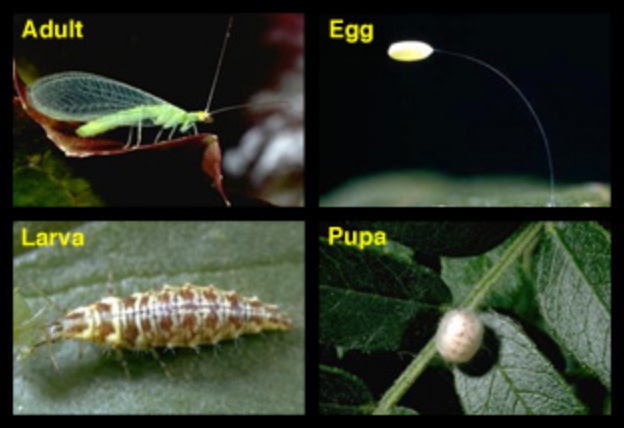 Natural Enemies are Good for Your Garden - June 8, 2016 Jeff Schalau, Agent, Agriculture & Natural Resources University of Arizona Cooperative Extension, Yavapai County As we inspect our gardens, orchards, and landscapes, our eyes are drawn toward foliage, flowers and fruit. Imperfections tend to pop out at us. Many of us see insect damage and reach for a chemical insecticide before we view the entire picture. After inspecting our plants closely and assessing the surroundings, the trained eye can often see evidence of natural enemies that prey on plant feeding “pest” insects. There are multiple ways to promote natural enemies. The most important is to avoid the unnecessary use of chemical pesticides which not only kill pests, but also negatively impact these natural enemies and other insects that are simply going about their business. Natural enemies may include: lady beetles (lady bugs), lacewing flies, syrphid flies, parasitic wasps, minute pirate bugs, assassin bugs, big eyed bugs, spiders, and others. In any pest management program, it is important to encourage these natural enemies by avoiding pesticides that kill them. You also can encourage beneficial insects by choosing plants that provide them with pollen, nectar, and shelter and keeping ants out of pest-infested plants. Learn to identify good bugs, both in their adult forms and immature (larval) stages. To improve your ability to identify natural enemies, I have included several photos and references with the online edition. Many times, insect damage can be minimized by modifying our practices and plant choices. In the landscape, this can be accomplished by planting pest-resistant or well-adapted plants such as natives. Native and drought-adapted landscape plants do not usually require fertilization. Nitrogen fertilization can make plants more attractive and nutritious to plant feeding insects and other herbivores. Fertilizers also promote fast growth which promotes weaker limbs and increases the need for pruning. Pruning creates wounds which require energy to heal and can allow pathogens to enter the plant and initiate plant disease. Fertilizers have their place in management of turf, indoor plants, fruit trees, roses, vegetables, and annual flowers – otherwise, they should only be applied to treat specific nutrient deficiencies. Other pest discouraging practices include: alteration of the environment to prevent pest access to food, water, shelter, or other requirements insects need to thrive; excluding pests with physical barriers such as screen and floating row cover; and squashing, trapping, hand picking, washing off, or pruning out pests. You may also consider creating habitat for natural enemies and pollinators – this is sometimes called “farmscaping” (see the April 22, 2015 Backyard Gardener). Sometimes nonchemical controls are ineffective and/or pests reach intolerable levels. There can be other situations where safety or structural damage is threatened as with paper wasps, feral bees, termites, etc. Pesticides should be applied in combination with the other pest management strategies described above. Try to use the least toxic, most effective material to protect human health and the environment. Examples of least toxic insecticides include: soaps, oils; and microbial insecticides such as Bacillus thuringiensis (Bt) and spinosad. You may consider purchasing natural enemies from a commercial supplier. Natural enemies will only stay around if they have ample food (pest insects) or are enclosed. For instance, purchase of adult lady beetles is not usually effective unless they have aphids to eat and are in a greenhouse. Outdoors, they tend to just fly away. Conversely, purchase of eggs or larvae of ladybird beetles and lacewings can be more effective because they cannot fly. Praying mantids are voracious feeders, but are less discriminating – they will eat anything including pollinators and each other. Biological control companies typically provide customer service to help assure that their products are effective. This includes the availability and cost of natural enemies, descriptions of target pests and their biology, and recommendations for applying and evaluating their products. Product instructions usually describe the habitats and season in which the pests are encountered, developmental stages that are susceptible to parasitism or predation, and relevant behavior of the natural enemies, e.g. how far they move and how many pests they can parasitize or consume. It’s time to get in tune with natural enemies. First, view the photos and resources available with the on-line version of this column. Then, go to the garden and look for evidence of these allies. Usually, natural enemies are already present and doing their best! Follow the Backyard Gardener on Twitter – use the link on the BYG website. If you have other gardening questions, call the Master Gardener help line in the Camp Verde office at 928-554-8992 or e-mail us at verdevalleymg@gmail.com and be sure to include your name, address and phone number. Find past Backyard Gardener columns or provide feedback at the Backyard Gardener web site: http://cals.arizona.edu/yavapai/anr/hort/byg/. Additional Resources  Eggs, nymph, and adult assassin bugs, from: University of California IPM.  Eggs, larva, pupa, and adult of convergent lady beetle, from: University of California IPM.  Egg, larva, pupa, and adult of green lacewing, from: University of California IPM.  Eggs, nymph, and adult minute pirate bugs, from: University of California IPM.  Egg, larva, pupa, and adult of syrphid (hover) fly, from: University of California IPM. Additional Resources Biological Control and Natural Enemies, University of California. http://www.ipm.ucdavis.edu/PMG/PESTNOTES/pn74140.html Biological Control: A Guide to Natural Enemies in North America, Cornell University. http://www.biocontrol.entomology.cornell.edu/ |